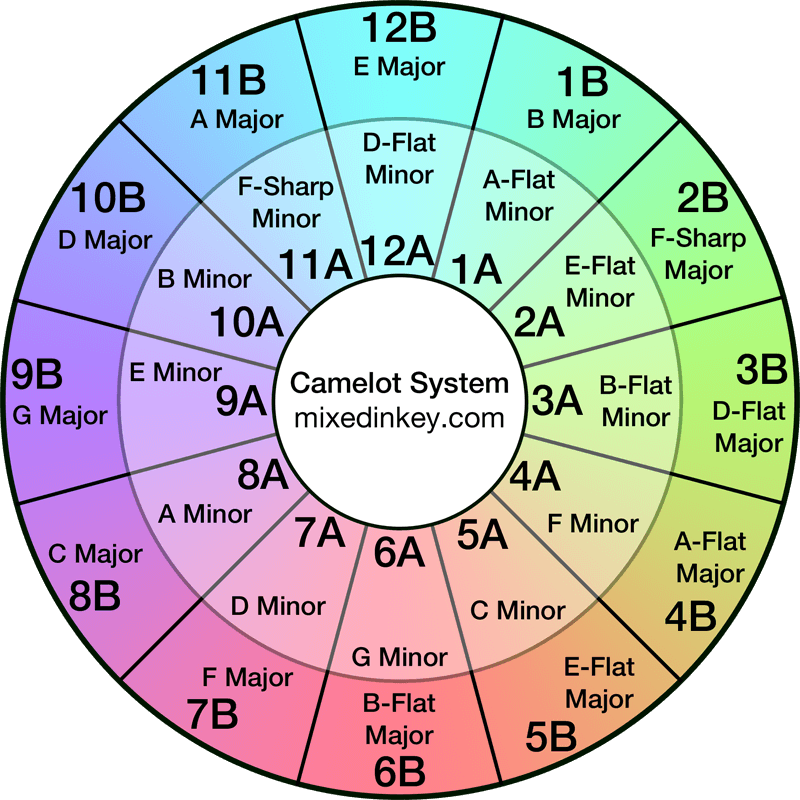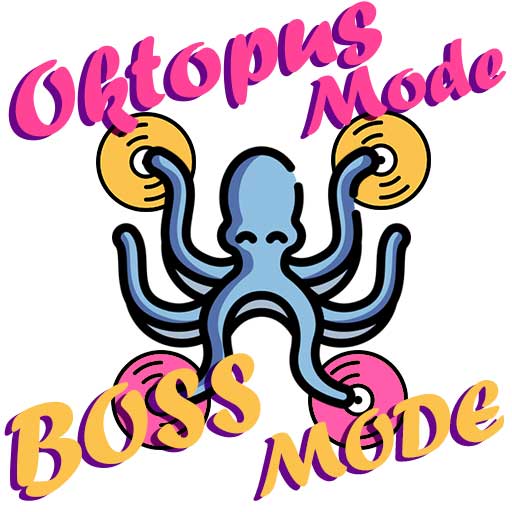Mixing music: 5 tips to make your DJ mix better
About 99.9% of all DJs play their first set at home. Number of listeners: one - yourself. Maybe that's a good thing when you're just starting out as a DJ. And also quite normal: when you start DJing, experimenting is a good way to improve quickly. Just start mixing, choose songs spontaneously, learn from your mistakes - that's the ideal strategy if you want to hone your DJ skills.
But then comes the first moment of truth: you want to upload your first official DJ mix to Mixcloud, Audiomack or Soundcloud. The "just start mixing" tactic doesn't feel right now - this mix will be your first footprint as a DJ on the internet and you want it to hit the spot. With the following five tips, you'll make sure it does. Even if you've already uploaded a few DJ mixes and have some live experience, it's still worth reading on - you might not know one or two of these tips yet. Or have you heard of the Camelot Wheel?
1 | Preparation: Develop your musical game plan
If you want to mix music and then publish it online as a DJ set, you should give the mix a storyline. Think about which songs you want to play and in which order. A good starting point is to think about the mood you want your DJ mix to express. A cheerful pool party with beer pong and inflatable flamingos? The main stage of an electro festival in the evening sun? A summer party night, from the last rays of sunshine to the first rays of dusk like in this mix??
This mood will become the leitmotif in your DJ mix. Once you've found it, you'll probably quickly come up with 10-15 songs that express this emotion for you. These songs will become the basis for your DJ mix. Supplement them with other songs that convey a similar mood or fit well with your base in other ways (see "Harmony"). Determine the order of the music you want to mix in advance. Many DJ software such as Traktor or Serato have comment fields that you can use to number the order.
Another part of the preparation for mixing music is tagging your songs in the DJ software. All good DJ software allows you to set cue points in songs, which you can navigate to via your DJ controller at the touch of a button. Setting cue points is not only important for your next DJ mix, but a general basis for well-organized DJs. For example, I use cue points to mark important elements in a song (e.g. breakdowns, intros or outros) and to indicate good places for tempo changes and transitions.
Tagging loops in your songs is just as important when mixing music. This allows you to mark melodic or rhythmic elements that you can capture as an (endless) loop in the live mix at the touch of a button - making a top transition much easier!

2 | Harmony: Become a Knight of Camelot
The harmony in a DJ mix is one of the most important, but most neglected quality features. Of course, other things are also important when mixing music - but if you pay attention to the harmonic consistency of your mix, it will pay off for you every time. The good news is that you don't have to be a master of music theory to do this. I'm certainly not, but I've still developed a good sense of harmony in my DJ mixes. As well as a feeling when a DJ completely ignores harmony when mixing music in a live set - which often happens in professional environments too.
To ensure harmony in your DJ mixes, I recommend the Camelot Wheel from Mixed In Key. It's a huge help for DJs like me, who have no knowledge of music theory, to identify the pitch of a song and find suitable transitions when mixing music. The Camelot Wheel maps the standard pitches in a circle and assigns a number-letter combination to each note. "C minor" thus becomes "5A", "C major" becomes "8B". The circular arrangement shows which pitches can be combined particularly harmoniously when mixing music.

The Camelot Wheel from Mixed In Key: Helpful and circular

Adjacent pitches for more harmony during transitions
Adjacent pitches in the Camelot Wheel mean that they are in harmony with each other when mixing music. Let's take 8A (A minor) as an example. If you make a transition from a song in 8A to 7A, 9A or 8B, it will sound more harmonious than a transition to 4B, for example. The principle is simple - anything that is directly next to the pitch of the current song will sound good in the transition. However, in order to use harmonies effectively in your DJ mix, the pitch of the songs must also be correctly categorized in your DJ software. The good news is that many software programs such as Traktor now recognize pitches automatically - and usually correctly.
The Camelot Wheel has so many effects on music mixing that a separate article would be appropriate. At this point, I just want to tell you this much: Try transitions between pitches that are not adjacent. This will train your ear for harmonic and non-harmonic transitions. Incidentally, there are also top transitions in music mixing that are not harmonic. A melodic break between two songs often means a radical cut in the energy level of your DJ mix - used correctly, this creates the moments that make your mix unique.
3 | Change of pace: playing with speed
When mixing music, the keyword "energy level" is not only important for harmony, but also for speed. However, this is somewhat limited - while harmony is always important, speed depends heavily on the genres you're DJing. If you're a pure house DJ, the speed in your DJ mixes will probably be between 118 and 128 BPM. If you play hip hop, you can mix music at anything between 70/140 (depending on the grid in your software) and 110 BPM.
If your music repertoire consists of very different BPMs, you should see tempo changes as an opportunity to add more class to your DJ mix. You definitely shouldn't radically change the BPM of your DJ mix after every song - but in the right places in the mix, tempo changes add the right accents. For me, this realization took a while - when I first started mixing music, I avoided tempo changes as much as possible because I found good transitions between very different BPMs difficult. Over time, I developed some strategies to make such transitions interesting for the listener.
Every transition when mixing music has three main characteristics: Harmony (which pitch?), speed (which BPM?), and Instrumentalization (is the transition melodic or beat-heavy?). The more of these characteristics are the same in both songs during the transition, the better and smoother it will sound. The fewer characteristics that are the same, the more likely the transition will sound like a break in your mix. This also applies to tempo changes in your DJ mix: if you want a smooth transition despite the BPM difference, try to match as many of these characteristics as possible.
An example for that is this live mixin which I play hip hop, afro beats and reggaeton. At 6:35 minutes I start a transition between a 98 BPM and a 150 (75) BPM song, which fulfills all three characteristics despite the difference in tempo. Both songs have the same pitch (7A). I conceal the contrast in speed by radically lowering the BPM of the first song at 6:40 minutes. Tip: If possible, always lower the BPM quickly when mixing music - not over a longer period of time! The instrumentality is also fluid in the example transition - song 1 is melody-heavy with a bit of rhythm, the intro to song 2 is only a melody. As soon as the beat of song 2 drops at 6:55 minutes, the transition is complete. During a live set in a club, this is the point at which the crowd instinctively realizes that the energy level of the DJ set has changed.
4 | Four decks: multiply your possibilities
Mixing music is sometimes like cooking: The more burners you have at your disposal, the trickier your recipes can become. But it also becomes more difficult to keep an eye on all the records and not accidentally burn anything. The same applies to you if your DJ controller has four decks. You then have two more options for complex transitions - or for creating completely new live remixes! If you place suitable samples or rhythmic sequences on decks 3 and 4, you can use them as an additional element for transitions when mixing music.
An example for that is the Dusk Till Dawn mixfor which I used all four decks of my controller. It becomes particularly clear at 5:00 minutes, where I let three songs run on top of each other for over a minute. The fourth deck then comes into action a little later for the next transition.
When mixing music with four decks, it is important to keep an eye on them all. With many DJ controllers, two decks share the same loop and FX areas. So make sure that you always have the right track selected. Don't suddenly set a loop in the song that should actually continue.

5 | Recording: Record your mixes, even if you don't upload them
Your own mistakes are often the best teachers - this also applies to mixing music. Make extensive use of the recording function on your DJ controller. Every time you make a new DJ mix at home, you should record it - regardless of whether you plan to upload it. This has three advantages.
On the one hand, you can listen to your DJ mix again afterwards and analyze which transitions worked, which didn't, and what the reasons are. On the other hand, sometimes a DJ mix that you didn't actually want to upload turns out extremely well - for example, because you spontaneously try out a new technique that immediately hits the spot. If you didn't press "Record" before mixing the music, you'll be annoyed. And finally, it's also fun to listen to your own DJ mixes over and over again - even the ones with mistakes and flaws. Each of your DJ mixes has different vibes and evokes different memories, which have a stronger effect through the flowing combination than if you were to listen to the songs from the mix individually.
Actually, there's a fourth advantage: mixing music with recording makes you a better DJ in live environments. My advice is: do not edit your DJ mix before you upload it. Leave the rough edges that it would also have as a live mix. Authenticity is the keyword - you want to show exactly the same skills online that you bring to the club. There, you have no chance of correcting your mistakes afterwards when mixing music.
By recording your DJ mixes, analyzing them and uploading them unedited, you will hone your skills more than if you post-process them. You will reach a point in music mixing where your live mixes are increasingly of a quality where post-production is no longer necessary. And you will then also have this quality in a live set.
